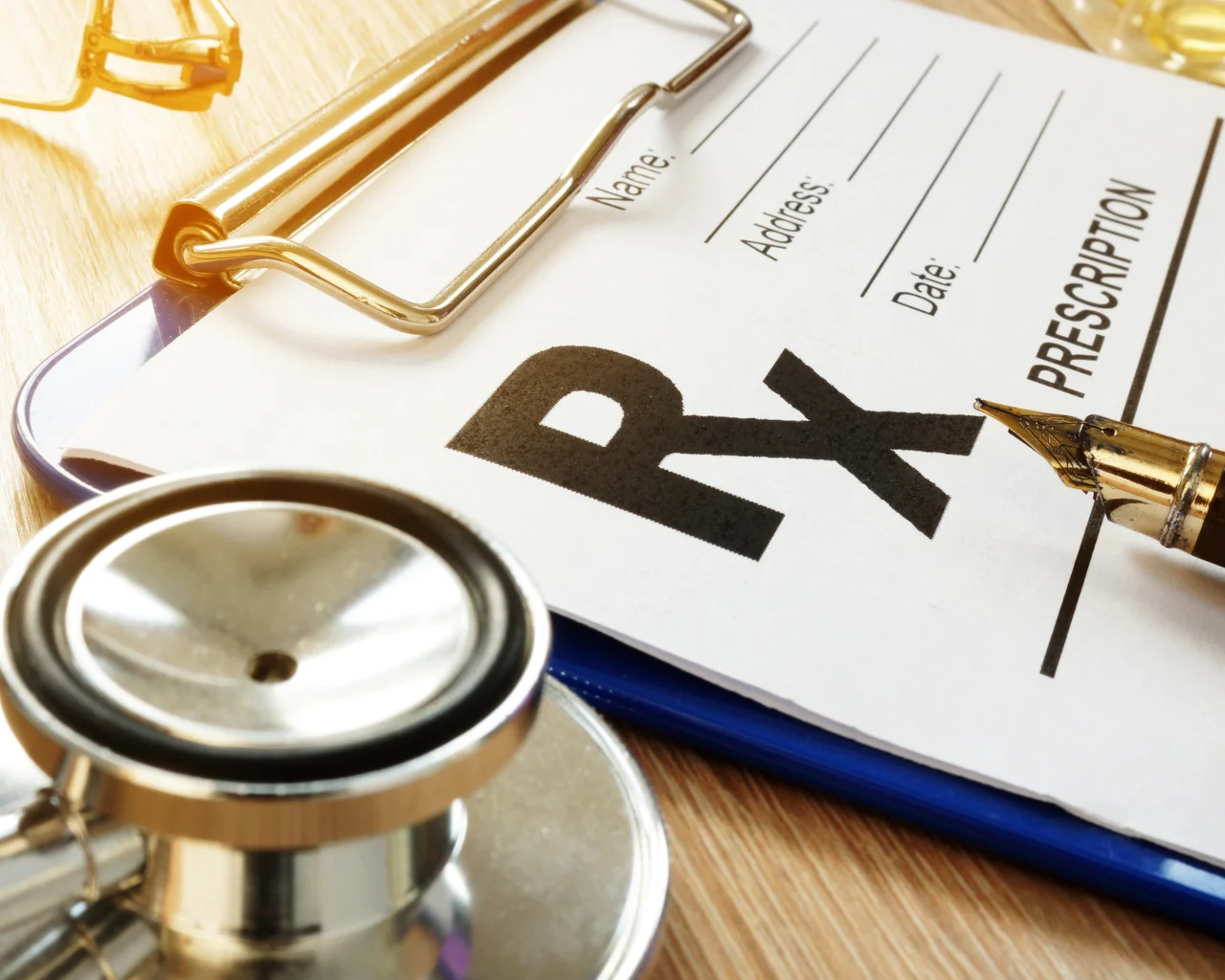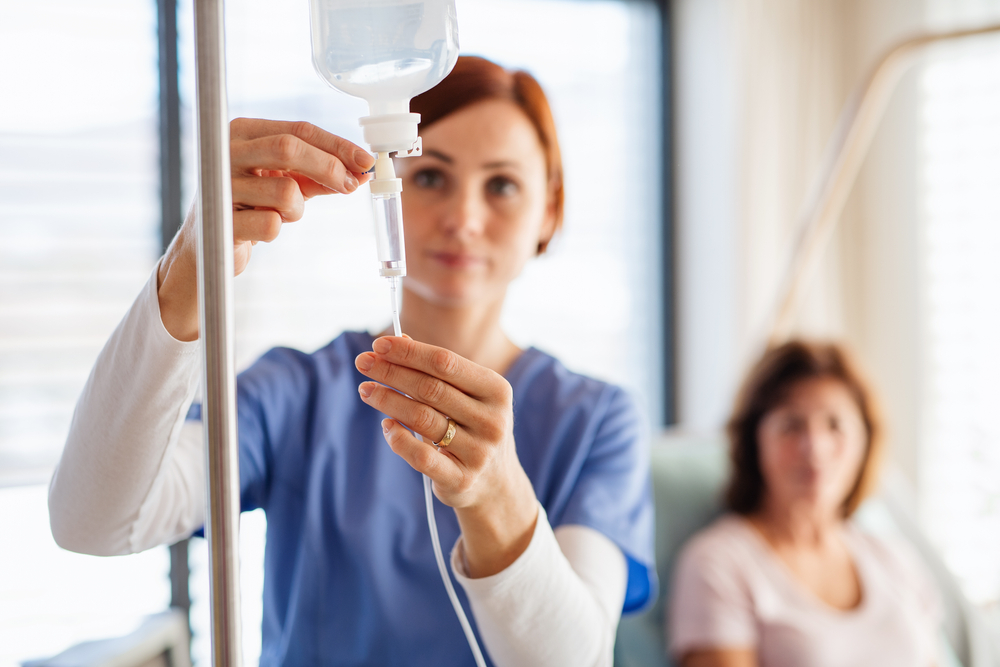Medication Assisted Treatment (MAT)
Part of the reason addiction recovery is so complicated and difficult is that addiction affects both your mind and your body, so if you’re only receiving therapy for the mental aspects of addiction, your body is still pulling you back toward drugs or alcohol. This is why medication assisted treatment can be so beneficial, because it’s an approach that treats both the physical and mental effects of addiction at the same time.

What Is Medication Assisted Treatment?
Medication assisted treatment or MAT is the use of certain medications approved by the U.S. Food and Drug Administration (FDA) to treat opioid and alcohol use disorders.
Medications are prescribed as one part of a comprehensive treatment protocol that also includes behavioral and alternative therapies. The medications help many people remain stable and avoid relapse while they receive therapy to develop the necessary skills to live without drugs or alcohol.
Medication assisted treatment for substance use disorders (SUD) is an option for those with opioid and alcohol use disorders entering inpatient, outpatient, or online treatment.
This type of treatment is backed by evidence and found to be safe and effective. Another of the medication assisted treatment benefits includes easing withdrawal symptoms so a person can have a clear mind when addressing issues in all areas of their life.
How Medication Assisted Treatment Works
Substances like opioids and alcohol alter how neurotransmitters communicate in the brain, making someone have cravings and urges for more of the substance. MAT like medication assisted opioid treatment stabilizes brain chemistry, reduces cravings, and ultimately lowers the chances of relapse.
Does Medication Assisted Treatment Work?
Numerous clinical studies show the effectiveness of medication assisted treatment. As published in the National Academies Press, medication assisted opioid treatment is effective because not only does it help prevent relapse but it also helps people stay in treatment longer.
MAT reduces cravings and withdrawal symptoms, the main reasons people leave treatment and relapse. By staying in treatment, people are more likely to be successful in recovery.
How Does Medication Assisted Treatment Help Protect Against Opioid Overdose?
According to the Centers for Disease Control and Prevention (CDC), opioid overdose deaths are down but the numbers are still alarming. In 2024, there were 54,743 opioid overdose deaths in the United States.
A medication assisted treatment program uses medications that are opioid agonists, partial opioid agonists, and opioid antagonists. These medications work in different ways. Some activate the opioid receptors and others block them entirely.
This is important because the opioid receptors in your brain which have become accustomed to having opioids. Binding to those receptors is effective in reducing cravings, easing withdrawal symptoms, and keeping people from misusing prescription or illicit opioids.
Many overdoses occur when someone detoxes and then relapses, consuming the same amount of drugs as they did before detox.
The problem is that the body’s tolerance to opioids decreases after detox. When a person returns to taking their usual amount, their body can’t process it, and they overdose. MAT provides a continuous, clinically supervised dose of opioids that is low enough to avoid the euphoric effects but high enough to prevent cravings.
In addition, treatment teams provide integration with behavioral therapies and support programs to ensure someone learns the necessary skills to avoid relapses, whether they continue using medication long term or wean off it.
Medication Assisted Treatment Medications
Each person with substance use disorder may require different medications to help them achieve long term recovery. Someone with an alcohol use disorder may require a much different treatment plan than someone with an opioid use disorder.

Factors doctors must consider, aside from the specific substance use disorder, include the following:
- Treatment level of care such as outpatient or inpatient
- Timeline and how long a person needs MAT
- How the medication will be administered
- If detox must occur before the first dose
There are several medication assisted treatment examples for alcohol and opioid use disorders. By learning more about them, a person can help their treatment team find the best solution.
Buprenorphine
Buprenorphine is a partial opioid agonist used in medication assisted treatment for opioid use disorders. It is a synthetic opioid approved by the FDA for use as a substitute opioid to reduce the use of more dangerous drugs, like heroin or fentanyl.
It has less potential for addiction and it doesn’t produce a high or euphoric effect when taken at the appropriate dose.
Buprenorphine is effective at reducing cravings for opioids and easing withdrawal symptoms. It comes in a tablet or a film that dissolves under the tongue, taken daily. There are also extended release versions of buprenorphine.
Some people start buprenorphine during detox or rehab, but it can also be prescribed through an outpatient MAT program.
This medication is best when administered twelve or more hours after the last use of an opioid. Doctors typically start at the lowest dose, monitor for effectiveness, and increase the dosage as needed.
Buprenorphine treatment can last up to two years or much longer, depending on a person’s needs. The most effective way to stop taking the medicine is to be weaned off slowly by a physician.
Two common formulations of buprenorphine are Sublocade and Suboxone.
Sublocade
Sublocade is a monthly extended release buprenorphine injection for opioid use disorder. It works by partially activating the opioid receptors in the brain, which helps reduce cravings and block the rewarding effects of other opioids.
Only a doctor administers the injection which is placed just under the skin in the abdominal area, typically in a clinical outpatient setting.
Sublocade contains buprenorphine, which is a partial opioid agonist and is prescribed for those with moderate to severe opioid use disorders or dependence.
Sublocade is injected as a liquid, but once in the body, it hardens into a depot or small ball so that the medicine can release adequate amounts daily for at least 29 days, but it can remain in your system for two or more months.
The starting dose for Sublocade is 300 mg for the first two months, then 100 mg as a maintenance dose. The length of time someone takes Sublocade will vary based on each person’s unique needs.
Some may choose to use it as a lifelong tool to stay sober. Others may decide to wean off the medicine with the help of their treatment team, which includes a doctor and therapist.
Suboxone
Suboxone is a combination of buprenorphine and naloxone. Buprenorphine provides a low dose of opioids to the body to prevent cravings and withdrawal symptoms. It binds to the same brain receptors as other opioids, but reduces their effects if someone tries to use them while taking Suboxone.
Naloxone, the generic name for Narcan, is an additive that prevents people from tampering with the medicine or misusing it to achieve the euphoric effects of opioids.
It essentially blocks the rewarding effects of the buprenorphine when someone injects it instead of taking it orally.Suboxone is usually prescribed in sublingual form to be taken daily. A physician can prescribe it in a clinical outpatient setting.
Suboxone is much safer than opioids like heroin or morphine, and overdose would be extremely difficult. Suboxone can be taken for months, years, or a lifetime. Continuation of treatment depends on the severity of someone’s opioid use disorder and the progress they make in recovery.
Naltrexone
Naltrexone is used in medication assisted treatment for alcohol and opioid use disorders. A common brand name for naltrexone is Vivitrol, which can be administered monthly as an extended release injection. Some people choose to take the pill version of the medicine daily.
Before starting naltrexone for opioid addiction, a person must go through complete detox and abstain from opioids for a week or more. If someone takes naltrexone before the recommended waiting period, they may experience severe nausea and vomiting.
This is one of the reasons why some people enter inpatient treatment when they are ready to detox and then transition to rehab and outpatient programs. Those with mild withdrawal symptoms may want to start naltrexone on an outpatient basis, but they too must detox first.
When taken for alcohol addiction, it can be started either during or after detox.
Naltrexone is not an opioid and does not cause withdrawal symptoms when someone stops taking it. It binds to and blocks the opioid and endorphin receptors in the brain, preventing someone from achieving euphoric effects. At the same time, it reduces cravings for alcohol and opioids.
It’s important to note that the injection form of naltrexone is the only one approved by the FDA to treat opioid use disorder. Medication assisted treatment with naltrexone lasts for several months, sometimes longer, depending on the severity of addiction and withdrawal.
Methadone
Methadone is an opioid medication commonly used to help treat opioid use disorder (OUD). It’s available in liquid, powder, or tablet form.
This medication works by binding to the same nerve cells (called mu-opioid receptors) as other opioid drugs, including heroin and fentanyl. However, the pleasurable feelings it produces are less intense because methadone takes a longer time to activate those receptors and stays in the body for a longer period of time.
In the U.S., clients being treated for OUD can only receive methadone through approved opioid treatment programs (OTPs). When they first begin methadone treatment for OUD, new clients are typically required to visit an OTP location in person.
They may go daily or every few days to receive the medication. Policy changes implemented in 2020 in response to the COVID-19 pandemic now allow clients to take home up to 28 doses of methadone from an OTP at a time once they’ve established a treatment program at an OTP.
Acamprosate
Acamprosate is used in medication assisted treatment for alcohol dependence and addiction. While the medicine does not help with alcohol withdrawal symptoms, it does reduce cravings and urges to drink alcohol.
Though it is best studied in people who are abstaining from drinking, it is also commonly prescribed to individuals who are aiming to cut back on their drinking or maintain a moderate level of drinking.
It is crucial to continue taking acamprosate, even during a relapse, because getting back on track is more manageable with it than without it. Doctors prescribe the oral pill to be taken three times daily. It starts working shortly after taking it.
The dose will be based on a comprehensive evaluation by a physician. Working with a therapist while taking acamprosate is critical to learn life skills that can help prevent relapse. Both acamprosate and counseling are offered on an outpatient basis.
Disulfiram
Disulfiram is a deterrent medication for alcohol use, and you may hear it also called by the brand name Antabuse. Someone taking the medicine will experience unpleasant effects if they choose to drink alcohol.
The following effects are possible when taking disulfiram and alcohol together:
- Excessive sweating
- Heart palpitations
- Flushing
- Nausea
- Vertigo
- Hypotension, low blood pressure
- Tachycardia, a fast heart rate
Disulfiram is only available in oral tablet form, in either 250 mg or 500 mg. It can remain active in the body for a full 24 hours. MAT with this medicine can begin in inpatient or outpatient programs and can be used long term for relapse prevention.
Who is MAT For?
MAT is for many people with an opioid or alcohol dependence or addiction. Someone wanting to participate in medication assisted treatment must undergo a comprehensive evaluation by a licensed physician or other medical provider.

Doctors refer to the Diagnostic and Statistical Manual for Mental Disorders, Fifth Edition (DSM-5) to determine if a person meets the diagnostic criteria for substance use disorders.
A person must meet between one and three criteria to be diagnosed with a mild SUD. A person with moderate SUD meets four to five criteria, and someone with a severe SUD meets six or more criteria. The criteria are grouped into four categories by the American Psychiatric Association.
1. Impaired Control
Impaired control criteria include strong cravings or intense urges to drink alcohol or use opioids. Also, a person has a desire to quit using substances and may have even tried to stop, but without success. They may drink more alcohol or use more opioids than intended and for longer periods than they initially planned.
2. Social Problems
Social problems are when someone’s drinking or drug use interferes with their ability to complete tasks and fulfill responsibilities at work, home, school, or their social life.
They may also avoid activities to spend more time drinking or using opioids. A person continues misusing substances even though it causes problems in their relationships.
3. Dangerous Use
Dangerous use of opioids or alcohol can mean seeking or using substances in unsafe places. It can also mean continuing to misuse substances knowing it is causing or worsening physical or psychological problems.
4. Drug Effects
Developing a tolerance is one example of drug effects that meet the criteria for a SUD. Tolerance is someone’s need to take more of a substance to achieve the same effects as when they first began using alcohol or opioids.
For example, one or two beers may give a person a buzz when they first start drinking alcohol. The longer they drink, the more beers are needed to achieve that same buzz.
Drug effects also refer to someone experiencing withdrawal symptoms when they quit, cut back, or run out of alcohol or opioids. Withdrawal can be mild, moderate, or severe and cause significant discomfort, which is why many people return to drinking alcohol or using opioids.
Fortunately, MAT is safe for long term use, making it an excellent option for those with mild, moderate, or severe SUD.
Types of Medication Assisted Treatment Programs
There are multiple types of medication assisted treatment programs. Your physician or licensed mental health professional will help you determine what best meets your needs.
Your options include:
- Inpatient medication assisted treatment rehab
- Partial-hospitalization program (PHP)
- Intensive outpatient program (IOP)
- MAT clinics
- Physician’s offices
- OTPs
Note that some of the same medications in MAT are also sometimes used in detox programs to ease withdrawal symptoms. However, they don’t use the term MAT when they’re used in a detox setting because MAT is the long term use of these medications, whether for months or years.
Inpatient programs typically occur in a hospital-like or residential setting with 24/7 access to medical staff in rehab. Inpatient programs are very structured, and once stabilized, a person can begin individual and group therapies to learn relapse prevention skills.
Outpatient programs range from the most restrictive level, a partial hospitalization program or PHP, to the least, treatment in a physician’s office. PHPs operate five days a week for five or more hours daily.
The next step down from PHP is an intensive outpatient program or IOP which includes treatment three days a week for at least three hours daily. People participate in individual and group therapies to learn and practice recovery skills.
MAT clinics and physicians’ offices are stand-alone programs where someone visits daily, weekly, or monthly to receive their medication. Participants must attend counseling and support services to continue in the program.
All of the outpatient care programs offer flexible treatment during business hours. Participants live in their own homes if they have a positive support system and a healthy living environment, or in a sober living home.
Virtual sessions with doctors and therapists give people needing MAT more access to care.
Medication assisted treatment online means receiving a comprehensive evaluation, telemedicine, prescriptions, and therapy from anywhere in the world, from the comfort of home or while traveling. Online MAT reduces many barriers to treatment such as geography, transportation, and costs.
Benefits of Medication Assisted Treatment
Medication assisted treatment benefits will vary for each participant.
However, MAT has been shown to do the following:
- Reduce the risk of alcohol or opioid related death
- Lower the likelihood of using other opioids
- Improve social functioning
- Improve treatment retention
- Decrease injection drug use
- Reduce the risk of HIV and transmission of diseases
- Reduce the risk of hepatitis C
- Reduce opioid and alcohol cravings
- Prevent relapse
- Support long term recovery
- Improve quality of life
MAT programs are evidence based and approved by the FDA. Furthermore, women opioid users who are pregnant achieve better outcomes and their babies have fewer withdrawal symptoms after birth.
How Does Medication Assisted Treatment Help Protect Against Overdose?
MAT reduces cravings, eases withdrawal symptoms, and makes staying in treatment a realistic option.
The longer someone stays in treatment, the better they become prepared to maintain recovery when they return to their home environment. In this way, it reduces the risk of relapse both in the short term and in the long term, and every relapse has the potential for an overdose.
In addition, some MAT medications can actually lower your risk of an overdose if you do relapse while taking them. They block some of your opioid receptors so that opioids like heroin or fentanyl will affect you less than they normally would.
Find a Medical Assisted Treatment Near Me
Effective MAT programs are accessible and often more affordable than other programs.
You can find inpatient, outpatient, or online programs that offer professional help. Treatment Centers Directory has a comprehensive directory of MAT programs and other types of addiction treatment facilities so you can find one in your area that has the treatment you need.
You can also reach out to the following for assistance:
- Local counselors or social workers
- Local treatment centers
- Hospitals
- Friends and family
- County drug and alcohol agencies
It’s critical to know how to start a medication assisted treatment program. After you contact a treatment center, you’ll typically begin with an assessment and consultation. They’ll learn about your substance use and explore whether MAT is the right approach for you.
You can also ask them questions such as:
- Do you offer inpatient, outpatient, or online treatment?
- What are the qualifications of the providers?
- Which medicines do you offer?
- How does the program work? What are the requirements?
- Do you have testimonials or references?
- Do you provide comprehensive assessments?
- What are your costs? Do you take insurance? What are your payment options?
Don’t wait to reach out and receive a comprehensive assessment to determine which type of MAT you need. Start your recovery journey today.
Frequently Asked Questions: FAQs About MAT
Yes, insurance companies are required by the Affordable Care Act to cover substance use disorder treatment, including MAT, just as they would cover any medical treatments. Each insurance company’s coverage will vary depending on the specific plan chosen. There may be copays, deductibles, or out of pocket expenses to pay.
Yes, Medicare Part B covers MAT programs, as long as the program you enter is credentialed and approved as a provider with Medicare. You must confirm their coverage with the MAT program of your choice before entering treatment.
Yes, there are numerous online MAT treatment providers. You can visit websites, chat with a team member, enroll, and attend therapy sessions from wherever you are, typically receiving your medications from your local pharmacy or a MAT provider in the area.
The length of time on MAT varies for every person and depends on many factors, such as severity of addiction, withdrawal symptoms, progress in recovery, and support. A treatment team will help you determine if your MAT should be short or long term.
While some MAT medications are considered opioid substitutes because they attach to the same opioid or endorphin receptors in the brain, they do not perform the same way in your system. They are administered in low doses, under clinical supervision, making it hard to develop an addiction. In this way, MAT medications are not substitutions for opioids but safe and effective solutions.
Yes, but only under a physician’s strict clinical supervision and care. Taking MAT medications while pregnant may reduce the withdrawal symptoms your baby has after birth.
A physician will perform an evaluation that covers your physical, psychological, family, and substance abuse history to determine which MAT medicine is right for you. After the assessment, your provider will discuss all your options and offer a recommendation. Learning as much as possible about each medicine will help you prepare for the conversation with your doctor.
Each medication has potential side effects. You must discuss this with your doctor before starting treatment so you know what to expect. Common side effects may include sweating, headaches, nausea, digestive issues, and appetite changes.
- What Is Medication Assisted Treatment?
- How Medication Assisted Treatment Works
- Medication Assisted Treatment Medications
- Who is MAT For?
- Types of Medication Assisted Treatment Programs
- Benefits of Medication Assisted Treatment
- Find a Medical Assisted Treatment Near Me
- Frequently Asked Questions: FAQs About MAT
More About Alcohol & Treatment

Medical Detox
Medical Detox: Cost, Timeline, & What to Expect For those struggling with substance abuse, medical detox is a critical step

Inpatient Drug Rehab
Inpatient Drug Rehab: What to Expect & How Much it Costs According to the National Center for Drug Abuse Statistics

Outpatient Drug Rehab
Outpatient Drug Rehab: Treatments, Cost, & How to Choose If you or a loved one is dealing with a drug

